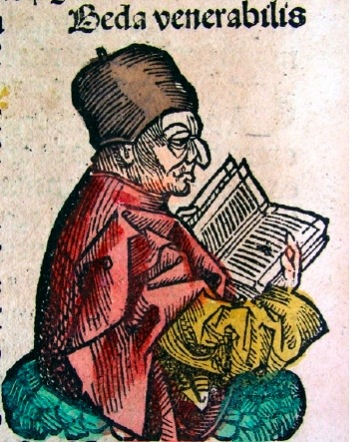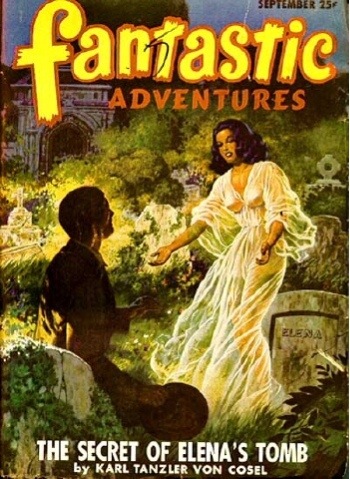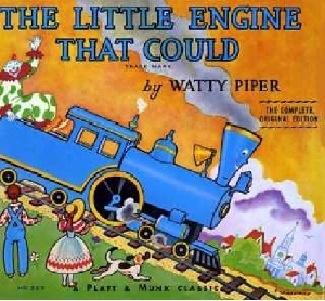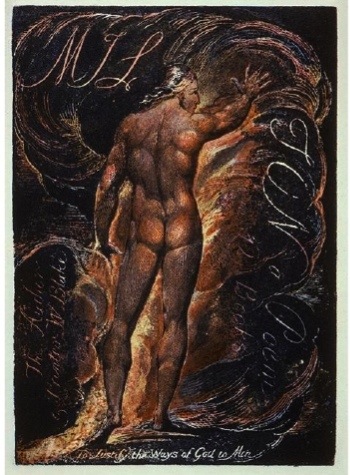You Are So Beautiful
Joe Cocker
When the Saints Go Marching In
 Venerable Bede from the Nuremberg Chronicle, 1493
Venerable Bede from the Nuremberg Chronicle, 1493
http://en.wikipedia.org/wiki/File:Nuremberg_Chronicle_Venerable_Bede.jpg
The Venerable Bede was one of the first English writers to make a literary impact, at least one of the first whose name we actually know. Actually he is St. Bede but he was called venerable for over a millennia before he was finally canonized and I guess the notion of St. Bede never really became that popular. Perhaps old habits are hard to break and thousand year habits can be especially obdurate. But though he has been declared worthy of honor and a saint, is he “literary” in the “canonical sense?
Bede is in every anthology I have ever used from my years as a student throughout my time as a teacher. He is, or at least his writing is, in the words of Joe Cocker, “so beautiful to me.” But then beauty is in the eye of the beholder and many writers with the detritus of a millennium or more between them and the readers of the day are found wanting; it is difficult to believe they can offer anything of value to those who are so different from them and whose times bear so little resemblance to theirs. But some aspects of the human character do not change all that much or even if they do, they still need a similar kind of nourishment.
 Saint Thomas More
Saint Thomas More
Hans Holbein the Younger
http://en.wikipedia.org/wiki/File:Hans_Holbein_d._J._065.jpg
Saint Thomas More is, at least in the eyes of most canon builders, a literary saint as well as an ecclesiastical one. Though his little book was not the first to create such a world, it has given its name to all attempts to imagine the perfect world on earth, as well as, by playing a bit with that word he coined, the name for the “worst of all possible worlds.” Which is appropriate because the attentive reader notices at some point during the journey through the book that More’s “utopia” is, in the mind of More, a bit of a dystopia. There are at least two genres of fiction (Utopic/Dystopic and satiric fiction) that we cannot talk intelligently about without tipping our hat to More. Perhaps what is needed in order to sort through all the candidates that present themselves for “canonization” are some clear rules, some steps we can follow on the road to literary sanctification that help the reader and the student to understand what it is about the book and the writer that make them worthy of our attention not just today but for all the days before us.
The Catholic Church has been canonizing people for ages and ages and the process they have established can offer guidance in establishing a path to its literary counterpart. There are five steps that must be gone through to be canonized a saint. Of course, it should also be remembered that the canonization process cannot be started until after the death of the candidate. In the case of books it is to be hoped that books continue to “live and thrive” and in fact would have to do so if they are to be considered, but perhaps the process of considering them should not begin until after the death of their authors. The church has its name for each step but they might be adapted to things literary:
Steps to Canonization
- Workman Like (Writing)
- Not a Cult Classic”
- Venerable
- Beautiful
- Literary Classic
To even be considered, a book has to get over a basic hurdle, the writing must seen to be workman like and competent. How this is judged of course can be problematic. It is the nature of great art of all genres and forms to innovate, to, in the words of Ezra Pound, “make it new” in some way. This means that there will be resistance to the writing and that perhaps initial reviews of it will be brutal. Truman Capote said of Jack Kerouac’s book On the Road, “that’s not writing, it’s typing.” Still it remains a staple of bookstores to this day and is still sought out by new readers. This would suggest that there might be a bit more to it than typing. It may be necessary to be a bit generous with this stage in the process and to accept that those nominating the candidate are individuals of good will deserving more benefits than doubts.
 Copy of cover of September, 1947 edition of Fantastic Adventures
Copy of cover of September, 1947 edition of Fantastic Adventures
http://en.wikipedia.org/wiki/File:FantasticAdventures.jpg
Some books are read and studied because they have a cult following. I remember reading in an article on best seller lists how groups that wanted to lend legitimacy to their movement would buy up books their leader published. The example they used was Scientology and its founder L. Ron Hubbard books (Hubbard got his start writing stories for publications like Fantastic Adventures that published stories for a kind of select readership). I do not know how much truth there is to this but for purposes of canonization there has to be something substantial to recommend the book. There are books that are taught year to year because they happen to be in the book closet and perhaps the definition of a cult should be expanded to include that. But this, too, can be difficult.
Many writers progress to a revered status within a culture that began as cult writers. It was not unusual to see Philip K. Dick referred to in this way, but he has recently been awarded his own place in the Library of America, a publisher that, usually, only prints books of those writers deemed to be America’s best. So perhaps there needs to be some flexibility here as well and in all probability if the writer is only a cult writer most followers are not likely to outlive the “master” and the difficulty in this sense resolves itself.
 The Little Engine that Could, cover from a 1953 edition of a children’s book
The Little Engine that Could, cover from a 1953 edition of a children’s book
http://en.wikipedia.org/wiki/File:Littleenginethatcould.jpg
This is a book that has played a “venerable” role in the development of many a child and as such is probably worthy of elevation to the place held by Bede for so many centuries. I do not know if it is “canonical” but it taught me a lesson that has stayed with me throughout my life, that I should never give up no matter how hopeless things may look. There are a slew of books that played such a role in my childhood, stories like Stone Soup and Jack and the Beanstalk when I was very young to the stories of H. G. Wells, Arthur Conan Doyle, and Jules Verne when I was a bit older. Some speak of Goodnight Moon, Nancy Drew, and the Hardy Boys in a similar fashion and perhaps they too, are worthy of a revered place, though the quality of the writing in some is dubious, I think.
That said, I am told many women have gone on to achieve amazing things under the inspiration and example of Ms. Drew. Tom Swift encouraged me to puzzle things out and piqued an interest in things scientific. Looking back at these books today their language seems dated and in some instances they contain troubling examples of the cultural underbelly of America of the 1930’s and 1940’s. But they did inspire. There was an article about race and fiction a few years ago that pointed out how Margaret Mitchell’s book Gone with the Wind is very popular among African-American women even though many see the book as rife with racial stereotypes. Perhaps this is the proper place for flawed books that have done some good in their time.
David Ulin in an article in the Los Angeles Times, “The lost art of reading”, talks about struggling to read. He is a “reading professional” not just a reviewer of books but the book editor of the paper. The article focuses on some of the problems modern readers have carving out the kind of time necessary to do real reading and that the demands and troubles of the day often keep us from spending the kind of time reading that we ought. Larry McMurtry in his book Walter Benjamin at the Dairy Queen writes about how after having had open-heart surgery he could motivate himself to read. The trauma of the event overwhelmed him. He forced himself to read Proust and after getting through these long and beautiful books his love of reading returned, but there were a few years when it looked like it might not. Ulin in his article describe his experience with this loss of desire:
“So what happened? It isn’t a failure of desire so much as one of will. Or not will, exactly, but focus: the ability to still my mind long enough to inhabit someone else’s world, and to let that someone else inhabit mine. Reading is an act of contemplation, perhaps the only act in which we allow ourselves to merge with the consciousness of another human being. We possess the books we read, animating the waiting stillness of their language, but they possess us also, filling us with thoughts and observations, asking us to make them part of ourselves.”
To be deemed venerable a book must be able to do this. Perhaps it will aspire to, and achieve, greater things, but even if it does not a book that can transport us in this way deserves a special place on the shelf.
 Charles Dickens
Charles Dickens
Daniel Maclise
http://en.wikipedia.org/wiki/File:Charles_Dickens_by_Daniel_Maclise.jpg
Being a wordy Victorian, Charles Dickens is often among the writers that have been revered in the past that folks want to send into exile today. Personally I think Mr. Dickens is among the greatest of the saints, but not all agree. Within Catholicism one cannot be “beatified” unless a miracle has taken place by this person’s intersession, after her or his death of course. Where this may be a difficult bar for people to cross I do not think this is as true of the books we read. Books that change us have performed a miracle of sorts, they have delivered the reader from a kind of blindness, scales have been removed and the reader sees what once unseeable. In the case of Dickens, Great Expectations, Our Mutual Friend, and The Pickwick Papers, among others, have performed this office.
Ron Rosenbaum writes in The Shakespeare Wars that he got tickets to see Trevor Nunn’s staging of Hamlet and Pete Brook’s staging of A Midsummer Night’s Dream. He says, “The Hamlet was memorable, one of the best I have ever seen. But it was the Dream that changed my life. (p 8) He then goes on to describe all the changes that took place in him. He also goes on to point out that it changed everyone he met since who saw that production. I do not know how true these statements are, but they should be verifiable. There are surely folks who could attest to the kind of person and scholar Rosenbaum was before he saw this production and the person and scholar he has become.
I know there are those that will look at this as so much facetiousness and even, perhaps, a bit silly. But I really think this is the heart of the matter for books that are elevated to the canon, or just shy of the canon. They are books that over a great many years continue to change people. There are people who after reading Plato’s Republic were forever changed so profoundly they went on to change others. That is one of the roles of the saints in the church, I suppose, they are people whose faith changed the faith of others who went on to change the faith of others still. Perhaps this is too much to ask of a book. But by their very nature the beautiful and the sublime change people, that is part of what it means to be not just pretty, but beautiful, sublime.
 Frontispiece to Milton, Prophetic Book by William Blake
Frontispiece to Milton, Prophetic Book by William Blake
http://en.wikipedia.org/wiki/File:Milton_by_Blake.jpg
Milton is one of those poets who is difficult to know how to take. Blake admired Milton greatly; the engraving above is for an epic poem he wrote about Milton. He writes toward the beginning of the poem “With thunders loud and terrible: so Milton’s shadow fell/ Precipitant loud thund’ring into the Sea of Time & Space. / Then first I saw him in the Zenith as a falling star. / Descending perpendicular, swift as the swallow or swift: / And on my left foot falling on the tarsus, enter’d there, / But from my left foot a black cloud redounding spread over Europe.” The tarsus is the heel and ankle of the foot and Blake seems to be suggesting Milton entered into the bones of his foot and came to dwell there and to inspire Blake to write his poetry. This is truly something miraculous, though I doubt it can be proven.
Still, Milton’s poetry has moved and changed readers from the moment it was first published. I had a student in my class a number of years ago. He was a bright but not very motivated student, I do not even remember if he passed the class. But just before the Christmas break we were looking at some passages from Paradise Lost. It is a hard sell under the best of circumstances and the circumstances surrounding our reading of the poem that day were more typical than extraordinary. But this student was captured by the poem. He spent the Christmas holiday reading it. He said he missed his stop on the Boston underground he was so engrossed. Perhaps he was just trying to impress me, but I do not think so because he could talk enthusiastically about details in the poem that obviously moved him. It may not have made him a good student, but it did make him a literary traveler. There are books that do this, old books, that require some assistance if they are going to be understood and they are worth taking the time to understand.
From Gulliver’s Travels
Lion’s Gate
The film clip is from one of the many films made of the book Gulliver’s Travels. In this clip, Gulliver brings great writers, politicians, thinkers, and a few scoundrels back from the dead to explain themselves to him. Many are the literary saints of Swift’s imagination, the great writers of Classical Greece and Rome mostly. One of Swift’s more enduring books is The Battle of the Books. It is an imaginary combat between the new writers of Swift’s age and those of the past, mostly the distant past. This struggle that we see today about what to include in the curriculum and what to teach is an old one. Part of the problem is that every age is “young” when compared with the flow of history and like many children believe they are much smarter than their elders. Were we to number our ages in decades rather than years we might reach that age where we are amazed by how much our elders have learn.
Though we may not all agree on what makes a great book great, or what books ought to be included in the canon of great books, we all know books that have changed lives and have changed us. No one of us needs to teach all these books, but we all need to have books that are old, venerable, beautiful, and saintly. Thomas Love Peacock in his book Nightmare Abbey talks about the education of Scythrop (a thinly disguised caricature of the poet Shelley). He says, “When Scythrop grew up, he was sent, as usual, to a public school, where a little learning was painfully beaten into him, and from thence to the university, where it was carefully taken out of him; and he was sent home like a well-threshed ear of corn, with nothing in his head.” If we want the schools of today to do more than this there needs to be something enduring that is passed along and cultivated. There needs to be less beating and threshing and more transformation and introducing students to those things with the power to transform. The books that do this are not understood easily and they need a teacher to introduce them to a world that has forgotten them.